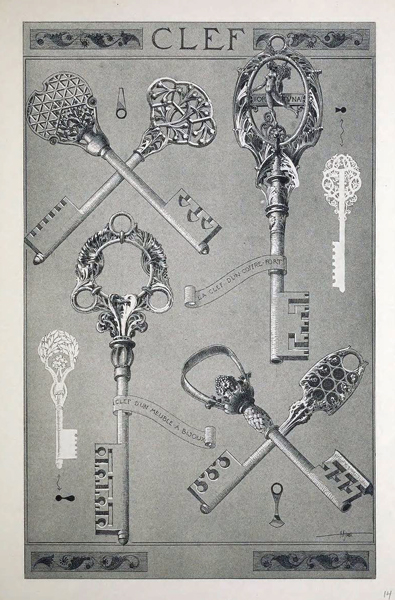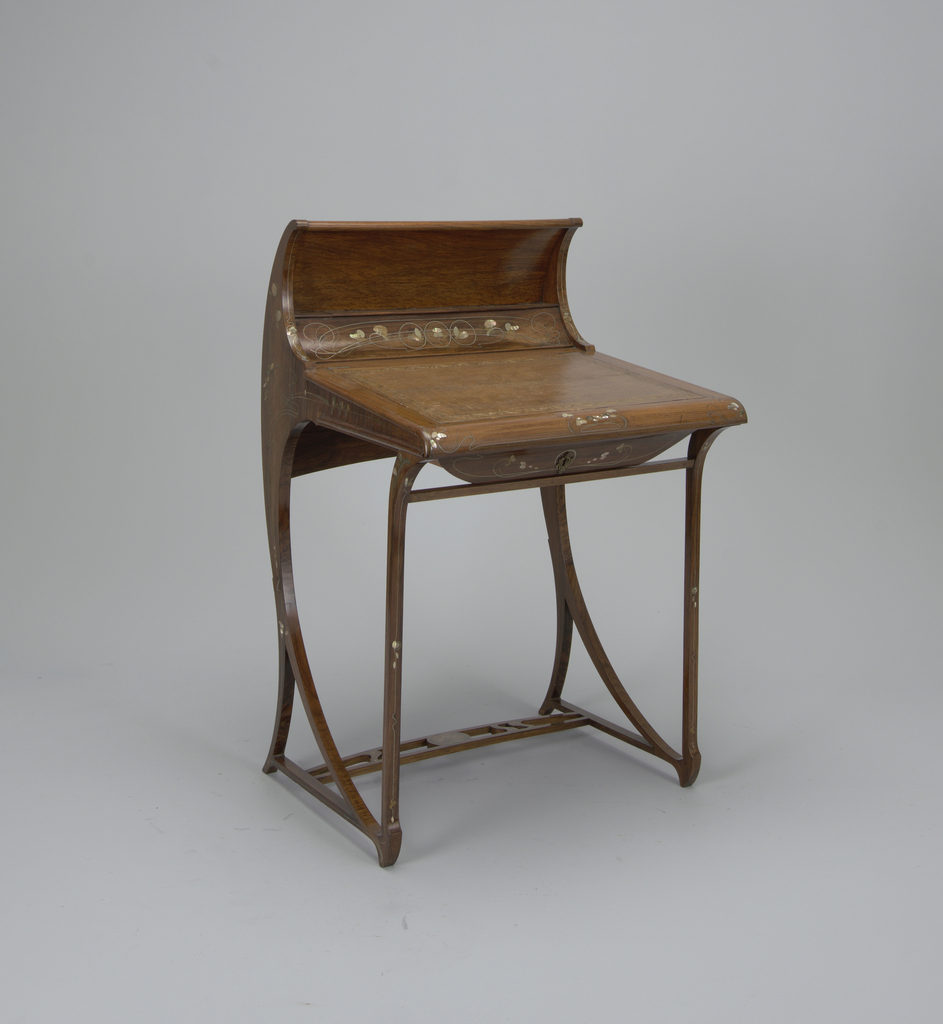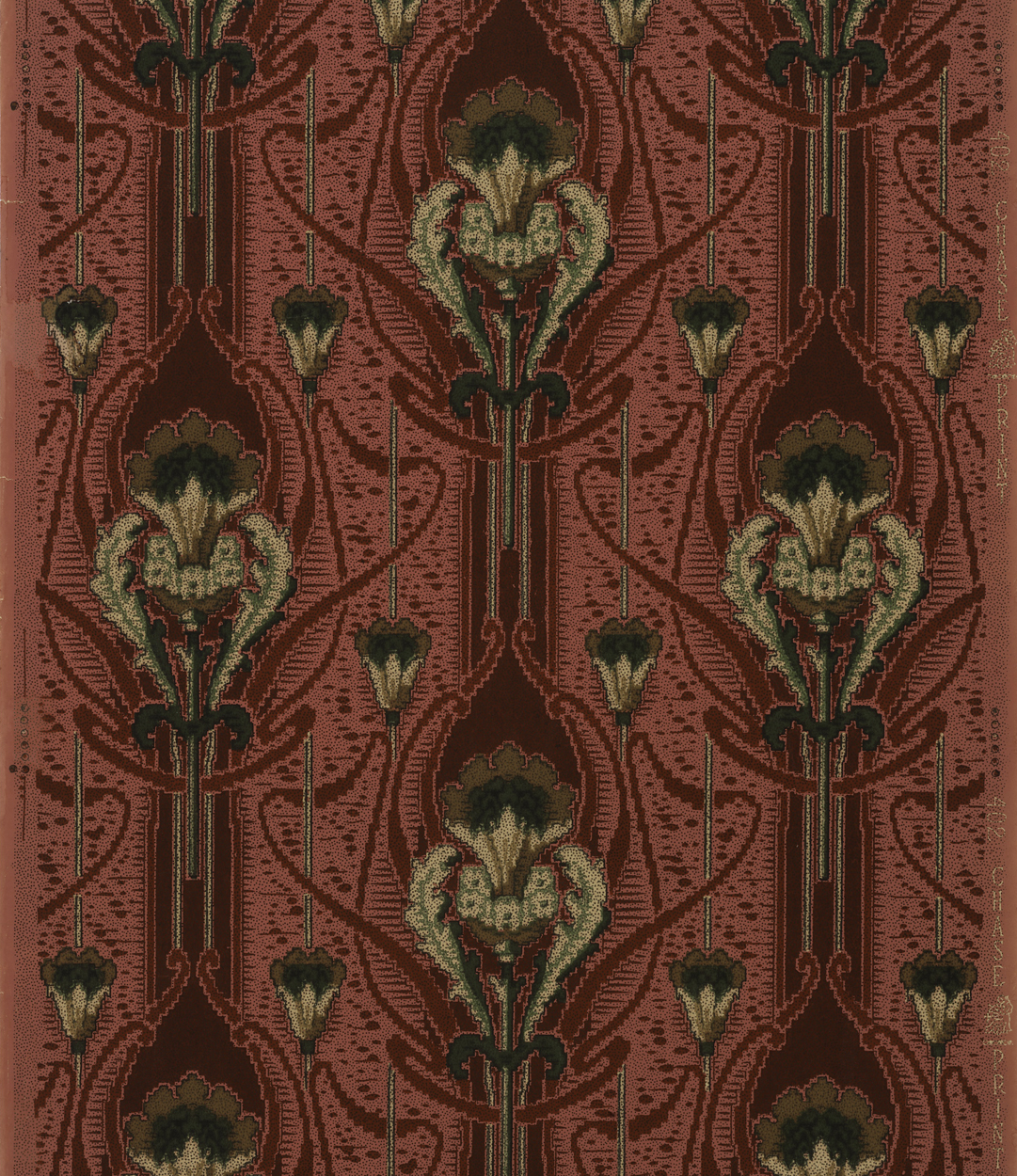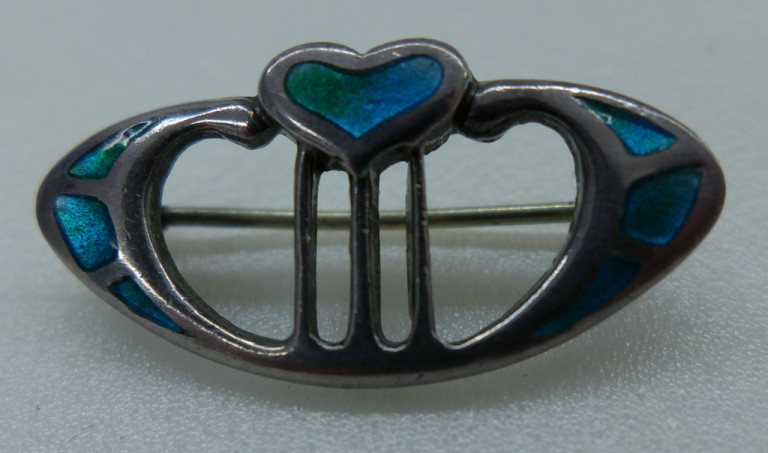Art nouveau as both an architectural style and a style for any kind of ornament, permeated so much of European culture during the time period of 1890–1910. Fashion, graphic design, household furnishings and so many other everyday objects reflected this style – even your house keys were Art Nouveau! The Cooper-Hewitt Library has a large...
This desk is an example of the Italian interpretation of the Art Nouveau style, known as Stile Floreale. This desk model was exhibited by Carlo Zen, a Milanese furniture manufacturer, at the 1902 First International Exposition of Modern Decorative Arts, in Turin, Italy. The exhibition helped Italy to show the rest of the world that...
This sidewall paper in the art nouveau style is printed in imitation of a tapestry or woven textile as seen in the pixelated-like borders of the motifs. This is part of a matched set which would include a coordinated wide frieze and ceiling paper, a trend which began around 1900 and remained popular until about...
In summer, when weddings are frequent, the thought of objects given in affection or love, makes a visit to the jewelry collection seem appropriate. This heart-form brooch is one of a group of jewelry by Charles Horner (English, 1821-1896) given to the Museum in December. Horner (English, 1821-1896) was an actual silversmith, watchmaker and enamellist...
From its inception, exuberant, organic, and sensuous rococo style has inspired subsequent revivals and new movements. As rococo’s influence once again gains momentum, Cooper-Hewitt invites scholars Laura Auricchio and Paul Greenhalgh to discuss the social and cultural histories behind rococo in eighteenth-century France and its revival in Art Nouveau at the end of the nineteenth...




